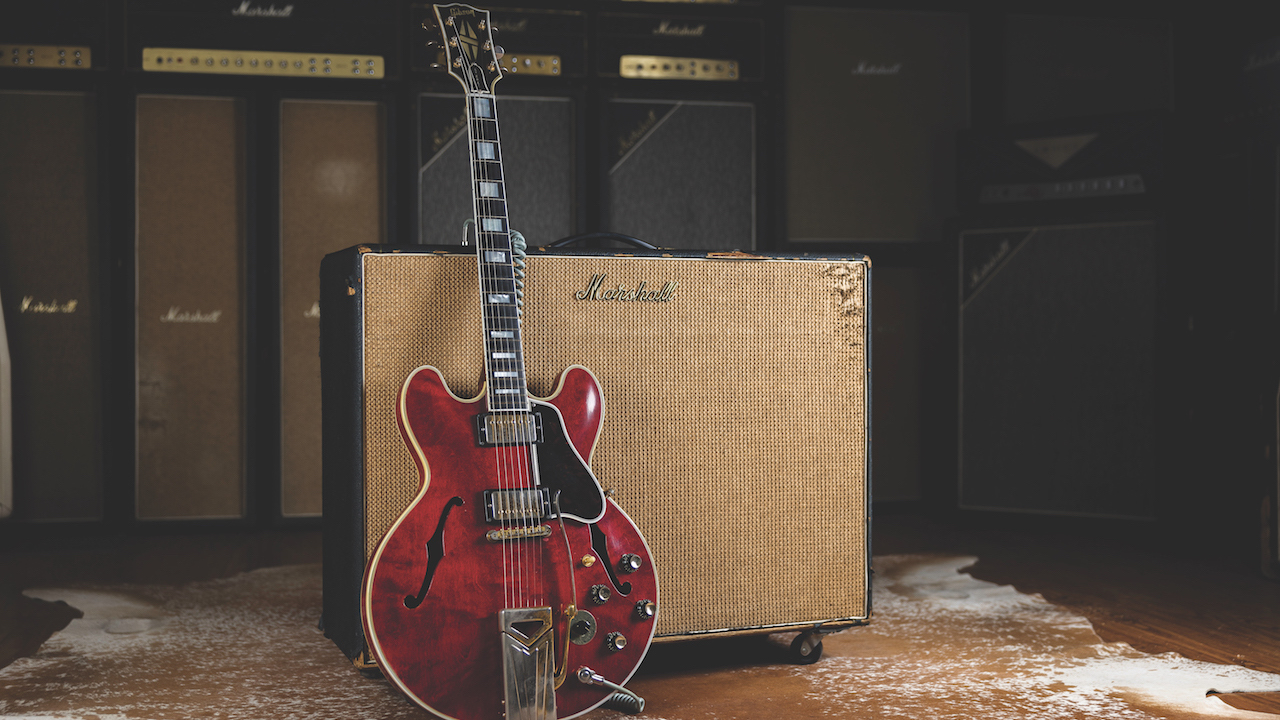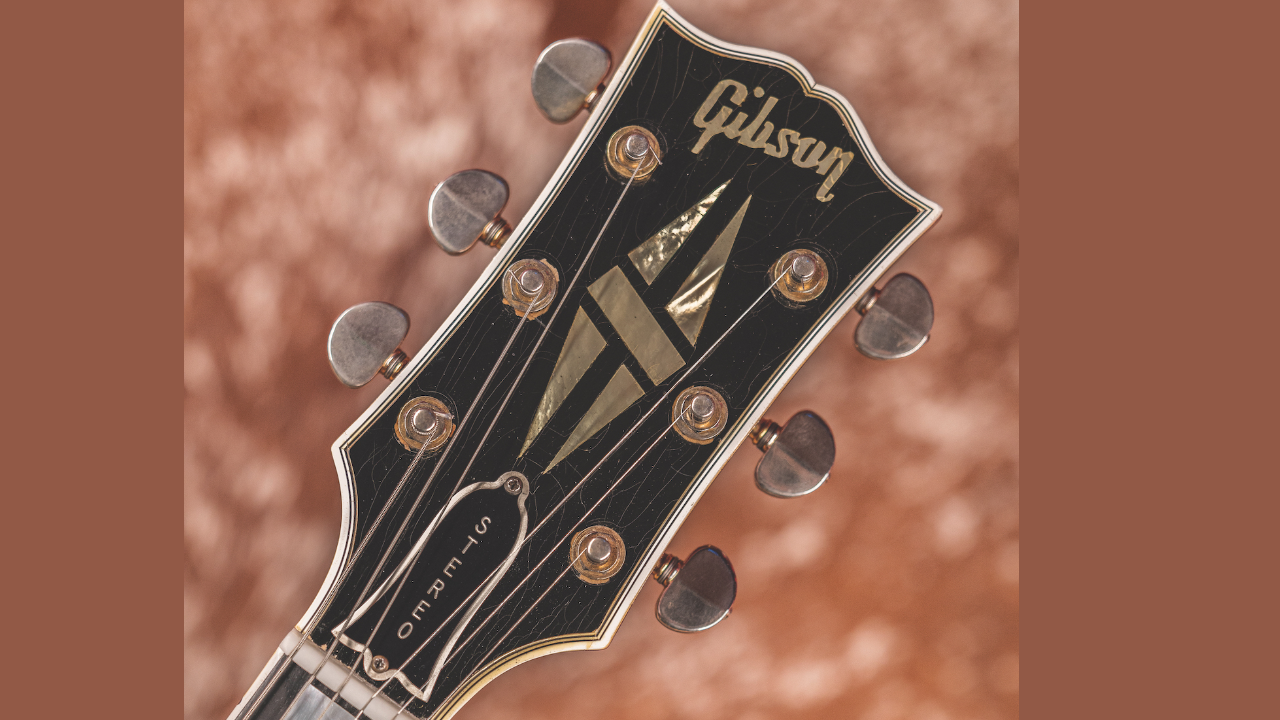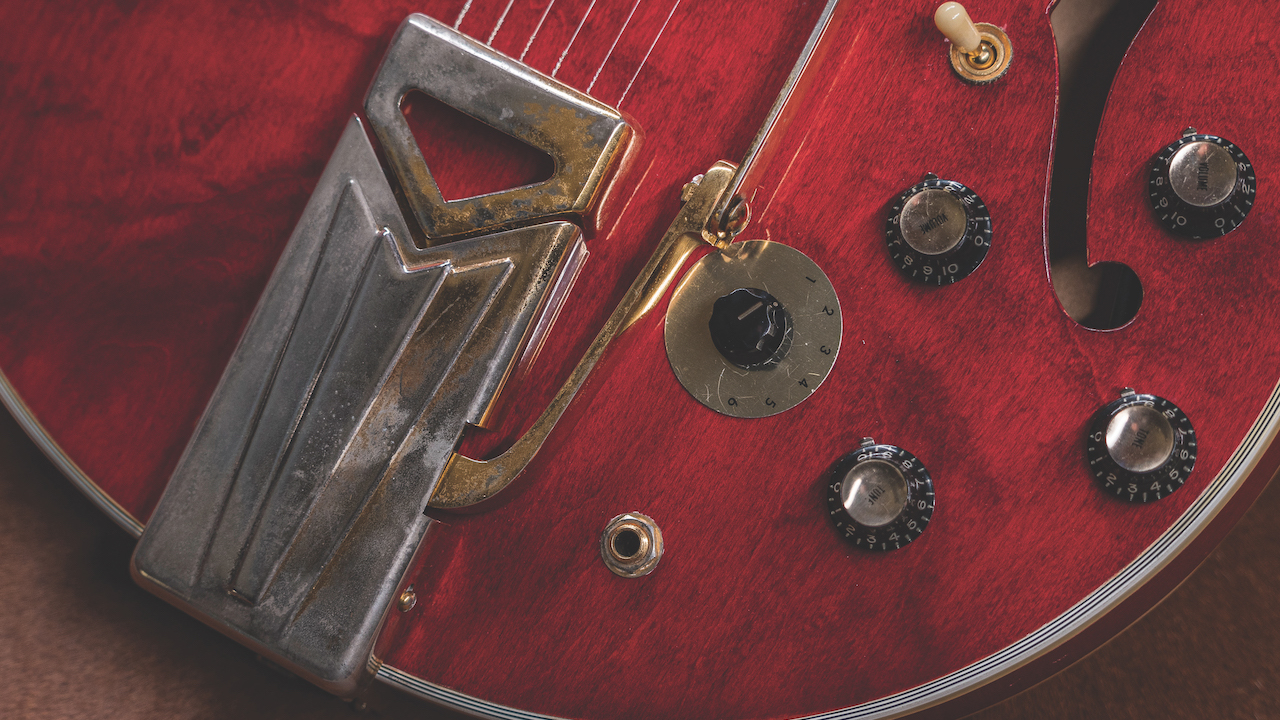“From its bling to its stereo electronics, Gibson’s ES-355 launched the semihollow format to swank new heights in 1958”: Favored by everyone from B.B. King to Johnny Marr, here's what makes the ES-355 so special
Gibson's upgrade to the ES-335, the ES-355 was fancy but a little too fussy for some…

Although it was Gibson’s first major endorsement-led electric guitar, the Les Paul model failed to set the market on fire during its initial run, from 1952 to ’60. But the thinline semi-hollowbody ES-335 that joined the company’s lineup in 1958 was much closer to an overnight success.
The seminal semihollow design immediately proved to be one of the world’s most versatile electric guitars, and it has retained that reputation ever since. And just as Gibson had extended the Les Paul range in 1953 with the Custom model, a.k.a. Black Beauty, the company added to the ES lineup in late 1958 with the ES-355, the top model of the range.
The step up to the ES-355 brought with it changes to the guitar’s electronics — including stereo wiring and a six-position Varitone switch — as well as cosmetics.
Like the Les Paul Custom, the 355 served up the bling, adding ebony, gold hardware and large fret-marker blocks, rather than the dot inlays of the ES-335 model. Just as the undeniably classy Custom had smartened the look of the base Les Paul model with its dinner-jacket attire and gold hardware, the standard Cherry finish of the debutante ES-355 brought more color to the palette and helped the rest of its adornments really pop.
Framed by seven-ply body binding, the deep-red translucent finish provided a stunning background for the gold-plated hardware, completing a package that screamed “top shelf” from any angle.
Sunburst and Natural were introduced as standard finish options in 1960, but for most players, the Cherry finish — which on many examples has faded to a watermelon red — will always be the classic look.

FANCY BUT FUSSY
Get The Pick Newsletter
All the latest guitar news, interviews, lessons, reviews, deals and more, direct to your inbox!
The ES-355’s high-end appointments carried on right up the neck, where pearloid-block position markers contrasted with the ebony fingerboard, and to the headstock’s split-diamond inlay.
Elaborate five-ply binding encircled the enlarged headstock, which was further upgraded with gold Grover Rotomatic tuners as standard and a truss-rod cover engraved (in most instances) with “Stereo.”
In other regards, the ES-355 had the same construction as the ES-335, which included a body made from laminated maple, a maple center block to help impede feedback and improve sustain and clarity, and a glued-in mahogany neck.
The use of an ebony fretboard on the ES-355, however, rather than the rosewood of the ES-335 and ES-345, enhanced the guitar’s treble response and gave a little more bite and clarity to the overall tone. It’s a brightness booster that some players don’t feel this model needs, which is why many have favored the standard-issue ES-335 over the years.

But a big part of that love for the down-market sibling stems from the ES-355’s overly complex electronics, starting with its stereo wiring. Placing the three-way pickup toggle in the front or back position selects the bridge (lead) and neck (rhythm) pickups individually but sends them to different “hot” terminals on the stereo (TRS) output jack.
With the switch in the middle position, however, both pickups are sent to their respective outputs simultaneously. Either way, the result requires a special Y cable to connect the guitar’s output either to two separate amps or two channels of the same amp (or, ideally in Gibson’s view, one of their own stereo amps, such as the GA-79RVT).
The ES-355 could also be special-ordered in mono, but most were made with the stereo feature, which a lot of guitarists avoided or converted to mono for ease of use. Bear in mind that Gibson reversed the polarity of the pickups in vintage stereo ES-355s, arguably to enhance the spread of the stereo effect when both were used together. Unless you’re a fan of the out-of-phase Peter Green tone, that’s another modification to factor in.
In its first three years of existence, the ES-355 came standard with a Bigsby vibrato (very few were made with no Bigsby and a stopbar tailpiece). For 1961–’62, the Bigsby was replaced with the arguably cumbersome sideways vibrola — as seen on our 1962 example featured in this issue — which, in turn, was replaced with a long vibrola with lyre cover plate in 1963.
Given the potential persnicketiness of any of these vibrato units, players have also sometimes paid a premium for one of the relatively few factory-hardtail vintage ES-355s made in the early years.
LUXE FOR LESS
The result of all this is that good ES-355s from the late ’50s and early ’60s have often sold for considerably less than comparable ES-335s, despite their elevated cosmetics. Those who dig the model for what it is, though, have often gotten great use out of its special features, and many players have found a lot to love in the Varitone settings, too.
The ES-355 has appealed to a wide range of notable guitarists over the years, including B.B. King, Chuck Berry, Keith Richards, Alex Lifeson, Otis Rush, Noel Gallagher, Johnny Marr, Tad Kubler from the Hold Steady and Ray Benson from Asleep at the Wheel. All have made hay out of the model’s broad sonic palette.
Though if you’re mainly drawn to a vintage ES-355 for its looks, it’s reason enough to scratch that itch.
Essential ingredients
- Thinline symmetrical doublecutaway body made from laminated maple with solid-maple center block
- Seven-ply body binding, five-ply headstock binding
- Glued-in mahogany neck, 24.75” scale length
- Ebony fretboard with pearloid block inlays
- Two humbucking pickups (one PAF, one Patent Number on this example)
- Six-position Varitone switch and stereo output jack
B.B. King's The Best of the Early Years is available to buy and stream now
Dave Hunter is a writer and consulting editor for Guitar Player magazine. His prolific output as author includes Fender 75 Years, The Guitar Amp Handbook, The British Amp Invasion, Ultimate Star Guitars, Guitar Effects Pedals, The Guitar Pickup Handbook, The Fender Telecaster and several other titles. Hunter is a former editor of The Guitar Magazine (UK), and a contributor to Vintage Guitar, Premier Guitar, The Connoisseur and other publications. A contributing essayist to the United States Library of Congress National Recording Preservation Board’s Permanent Archive, he lives in Kittery, ME, with his wife and their two children and fronts the bands A Different Engine and The Stereo Field.
"We tried every guitar for weeks, and nothing would fit. And then, one day, we pulled this out." Mike Campbell on his "Red Dog" Telecaster, the guitar behind Tom Petty & the Heartbreakers' "Refugee" and the focus of two new Fender tribute models
“A good example of how, as artists, you have to blindly move forward with crazy ideas”: The story of Joe Satriani’s showstopping Crystal Planet Ibanez JS prototype – which has just sold for $10,000













